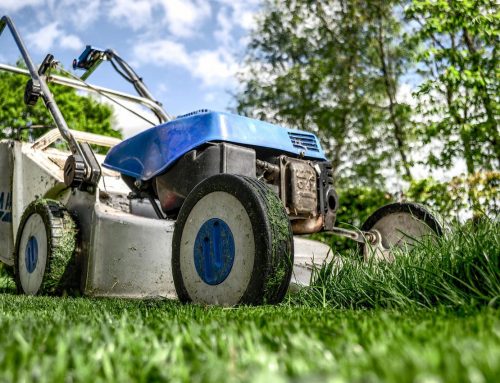As trees and shrubs get ready for winter by shedding leaves and adopting a dormant state, pruning can be carried out while having a clear view of the shape of each plant. When pruning it is important that your pruning tool is sharp and that any cut you make is clean. Climbing roses need pruning to keep them to your desired shape. Cut back side shoots to two buds and tie in vigorous growth. It might be worth your while to cut out some older stems to encourage new growth.
Shrubs growing in windy situations often suffer from wind rock. It is a good idea to cut back growth on these by up to a third to reduce the risk of wind damage. Newly planted trees will soon grow out of control if left to their own devices. Cut away shoots growing along the bottom of the stem. Some trees will develop stems that criss-cross each other and these should be thinned and tidied up.
Deciduous trees will be dropping their leaves now. These leaves are a valuable resource for gardeners as they can be turned into leafmould. If you have space, create an enclosure where you can dump fallen leaves. Wooden stakes and chicken wire are sufficient. Drop all your fallen leaves into the enclosure and leave them. They will slowly rot down and the result will provide you with valuable leafmould in two years time.
November is the best month to lift your dahlia tubers and put them into storage where they will be protected from frost. Place them in pots of fairly dry compost and do not water them over the winter. If you have to leave your dahlias in the ground, cover them with a thick layer of compost, leafmould or straw.
Now is also the time to divide and replant herbaceous perennials. Carefully lift each clump and split it with a spade. Replant the resulting sections and you will have flourishing new plants next year. Do this as part of your campaign to tidy up herbaceous borders. Remove rotting leaves and stems that might carry disease onto your plants. Fork out any weeds and then spread mulch over the bare soil. Mulch can be leafmould, garden compost or compost bought at your local garden centre. It is also a good idea to clean the glass in your greenhouse. This will ensure that as much of the lower winter light gets through to your plants. Remember to clean the greenhouse guttering too.
Plants in the greenhouse should be watered less from now until spring. However, do not allow them to dry out. If you rely on a heated greenhouse to protect your plants over the winter, check that your chosen heating method is working properly. Carry out any maintenance now, before the temperature drops too low.
Harvest those crops that you can store over the winter or that you need to preserve. Root vegetables are usually fine remaining in the soil and you can harvest them when required. Leeks can also be left in situ, but onions should be dug up, dried off and hung in strings or stored in light, airy conditions. The same can be said for apples and pears. Check on stored fruit and vegetables regularly and remove any that show signs of rot or serious deterioration.
Leafy green crops overwintering can be protected by the use of fleece. Crops like salad leaves or chard appreciate a little protection during the coldest months. The more tender fruit trees – figs, pomegranates and apricots – will love some insulation against the coldest weather. Fleece is great as it keeps off the worst weather but also allows air to circulate freely around the plants.
Summer fruiting raspberry canes should be planted now to give them a chance to establish strong roots before spring. Any spring-flowering bulbs not yet planted should be planted now. You can also plant bare-root roses. Soak the roots thoroughly before planting and make sure the plant is firm.
This time of year is a great time to plan for next year. The seed catalogues are out and we can spend some time with our feet up leafing through them and deciding what we would like to grow next year. Be bold and try a few plants that you have never grown before. Also consider if you are growing sufficient plants for pollinators and whether you are welcoming wildlife into your garden or allotment.





Leave A Comment